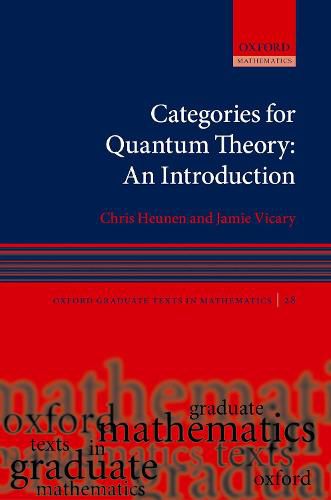Readings Newsletter
Become a Readings Member to make your shopping experience even easier.
Sign in or sign up for free!
You’re not far away from qualifying for FREE standard shipping within Australia
You’ve qualified for FREE standard shipping within Australia
The cart is loading…






Monoidal category theory serves as a powerful framework for describing logical aspects of quantum theory, giving an abstract language for parallel and sequential composition, and a conceptual way to understand many high-level quantum phenomena. This text lays the foundation for this categorical quantum mechanics, with an emphasis on the graphical calculus which makes computation intuitive. Biproducts and dual objects are introduced and used to model superposition and entanglement, with quantum teleportation studied abstractly using these structures. Monoids, Frobenius structures and Hopf algebras are described, and it is shown how they can be used to model classical information and complementary observables. The CP construction, a categorical tool to describe probabilistic quantum systems, is also investigated. The last chapter introduces higher categories, surface diagrams and 2-Hilbert spaces, and shows how the language of duality in monoidal 2-categories can be used to reason about quantum protocols, including quantum teleportation and dense coding.Prior knowledge of linear algebra, quantum information or category theory would give an ideal background for studying this text, but it is not assumed, with essential background material given in a self-contained introductory chapter. Throughout the text links with many other areas are highlighted, such as representation theory, topology, quantum algebra, knot theory, and probability theory, and nonstandard models are presented, such as sets and relations. All results are stated rigorously, and full proofs are given as far as possible, making this book an invaluable reference for modern techniques in quantum logic, with much of the material not available in any other textbook.
$9.00 standard shipping within Australia
FREE standard shipping within Australia for orders over $100.00
Express & International shipping calculated at checkout
Monoidal category theory serves as a powerful framework for describing logical aspects of quantum theory, giving an abstract language for parallel and sequential composition, and a conceptual way to understand many high-level quantum phenomena. This text lays the foundation for this categorical quantum mechanics, with an emphasis on the graphical calculus which makes computation intuitive. Biproducts and dual objects are introduced and used to model superposition and entanglement, with quantum teleportation studied abstractly using these structures. Monoids, Frobenius structures and Hopf algebras are described, and it is shown how they can be used to model classical information and complementary observables. The CP construction, a categorical tool to describe probabilistic quantum systems, is also investigated. The last chapter introduces higher categories, surface diagrams and 2-Hilbert spaces, and shows how the language of duality in monoidal 2-categories can be used to reason about quantum protocols, including quantum teleportation and dense coding.Prior knowledge of linear algebra, quantum information or category theory would give an ideal background for studying this text, but it is not assumed, with essential background material given in a self-contained introductory chapter. Throughout the text links with many other areas are highlighted, such as representation theory, topology, quantum algebra, knot theory, and probability theory, and nonstandard models are presented, such as sets and relations. All results are stated rigorously, and full proofs are given as far as possible, making this book an invaluable reference for modern techniques in quantum logic, with much of the material not available in any other textbook.